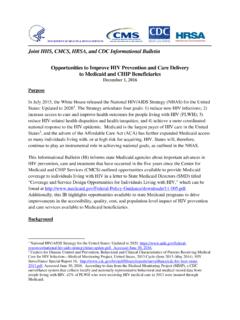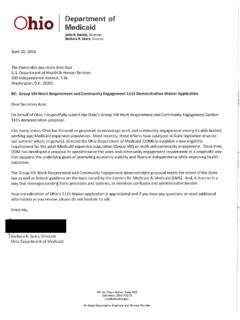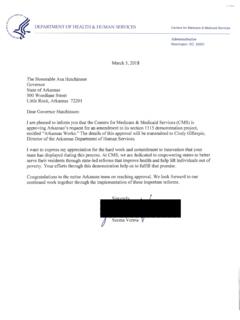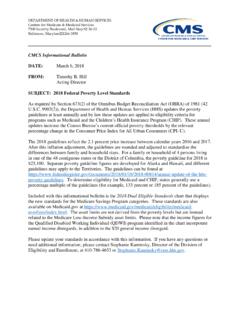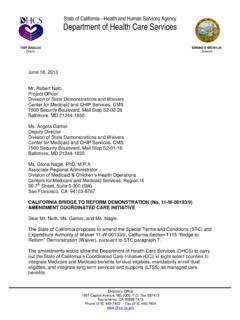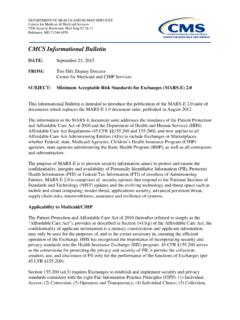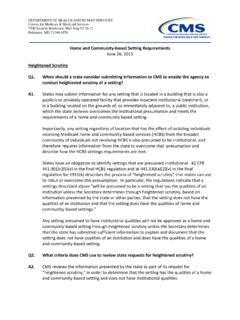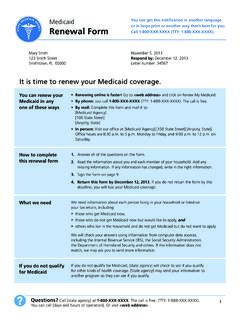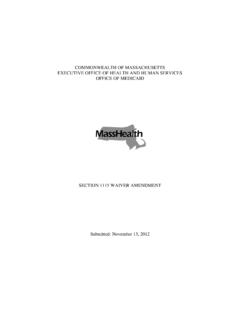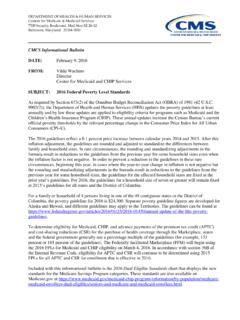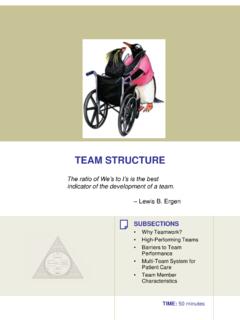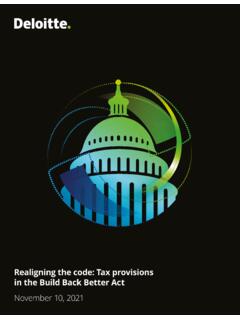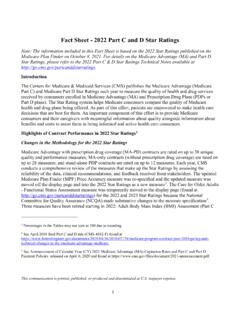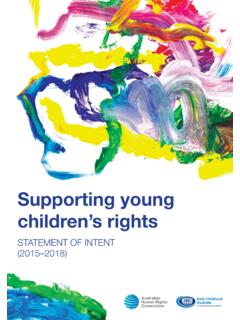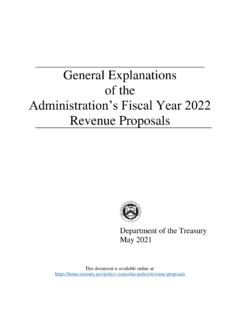Transcription of DEPARTMENT OF HEALTH & HUMAN SERVICES
1 The contents of this document do not have the force and effect of law and are not meant to bind the public in any way, unless specifically incorporated into a contract. This document is intended only to provide clarity to the public regarding existing requirements under the law. 1 DEPARTMENT OF HEALTH & HUMAN SERVICES Centers for Medicare & Medicaid SERVICES 7500 Security Boulevard, Mail Stop S2-26-12 Baltimore, Maryland 21244-1850 SMD# 21-006 RE: New Supplemental Payment Reporting and Medicaid Disproportionate Share Hospital Requirements under the Consolidated Appropriations Act, 2021 December 10, 2021 Dear State Medicaid Director: The Consolidated Appropriations Act, 2021 (CAA) was enacted on December 27, It established a number of new requirements for state Medicaid programs, including, in Division CC, Title II, Section 202 (section 202), the addition of section 1903(bb) of the Social Security Act (the Act) to specify new supplemental payment reporting requirements.
2 As defined in section 1903(bb)(2) of the Act, supplemental payments are payments to providers that are in addition to any base payment made to the provider under the state plan or demonstration authority, not including disproportionate share hospital (DSH) payments under section 1923 of the Act. The CAA also amended section 1923(g) of the Act, which describes the methodology for calculating hospital-specific Medicaid DSH limits, in Division CC, Title II, Section 203 of the CAA (section 203). This letter discusses new requirements related to supplemental payments, as well as new requirements for DSH. This guidance discusses new statutory supplemental payments reporting provisions, describing new requirements in section 1903(bb) of the Act in the context of existing requirements for a state plan amendment (SPA) that would provide for supplemental payments, upper payment limit (UPL) demonstrations, and claiming Medicaid expenditures for federal financial participation, as well as the Secretary s authority to require reports under section 1902(a)(6) of the Act and 42 , in the form and containing such information as the Secretary may require.
3 This letter presents general information on the new statutory requirements, describes processes available to states to comply, and provides technical information to facilitate states compliance with the statute. CMS may provide additional guidance on these requirements in the future. As indicated below, CMS intends to undergo notice-and-comment rulemaking to update the regulatory reporting requirements for Medicaid DSH payments to reflect the statutory changes to section 1923(g) of the Act. Section 1. New Supplemental Payment Reporting under Section 1903(bb) of the Act 1 116-260. The contents of this document do not have the force and effect of law and are not meant to bind the public in any way, unless specifically incorporated into a contract.
4 This document is intended only to provide clarity to the public regarding existing requirements under the law. 2 Through passage of Division CC, Title II, Section 202 of the CAA, Congress added subsection (bb) to section 1903 of the Act, which requires the Secretary of HEALTH and HUMAN SERVICES to establish a system for states to submit reports on supplemental payments as defined in section 1903(bb)(2) of the Act, no later than October 1, 2021. States are required to submit reports, as determined appropriate by the Secretary, on supplemental payments data, as a requirement for a State plan or State plan amendment [SPA] that would provide for a supplemental payment as required by section 1903(bb)(1) of the Act.
5 Since all states currently have an approved state plan, we interpret this requirement to apply both with respect to a State plan that currently provides for supplemental payments, as well as to SPAs that states may request that would provide for supplemental payments, if approved. We further interpret this requirement to apply with respect to all supplemental payments data as supplemental payment is defined in section 1903(bb)(2)(A) of the Act, to include all payments to providers in addition to any base payment (except DSH payments), whether under state plan or demonstration authority. Information about all supplemental payments under the state plan and under demonstration authority is necessary to provide a full picture of Medicaid payments.
6 Furthermore, comprehensive information about all supplemental payments generally will be necessary for states to submit the information required under section 1903(bb)(1)(B)(i) of the Act, which requires an explanation of how state plan payments are consistent with section 1902(a)(30)(A) of the Act, as discussed further With regard to base payments, state payment methodologies typically provide for a standard payment to the provider on a per-claim basis for SERVICES rendered to a Medicaid beneficiary in a fee-for-service environment. We interpret base payment, as used in the definition of supplemental payment in section 1903(bb)(2)(A)
7 Of the Act, to refer to these payments, including any payment adjustments, add-ons, or other additional payments received by the provider that can be attributed to SERVICES identifiable as having been provided to an individual beneficiary, including those that are made to account for a higher level of care or complexity or intensity of SERVICES provided to an individual Notably, CMS has long considered final reconciliation payments made under a cost reconciliation methodology where the state has established an interim payment methodology 2 Some states make supplemental payments to providers of home and community-based SERVICES (HCBS) through waivers under section 1915(c) of the Act.
8 Because section 1903(bb)(2) specifically defined supplemental payment to include payments under the state plan or under demonstration authority, without referring to waivers, we currently do not interpret the term to include supplemental payments under 1915(c) HCBS waivers or any other waiver authority, other than in the context of a demonstration under section 1115 of the Act. While we frequently have interpreted legislative references to waiver authority to include reference to section 1115 demonstrations (including those implemented under section 1115(a)(2) expenditure authority, regardless of whether a section 1115(a)(1) waiver is involved), it is not clear that Congress intended the term demonstration authority as used in section 1903(bb)(2)(A) to include waivers other than in a section 1115 demonstration.
9 However, we do not believe this limitation will compromise states and our ability to ensure that payments for 1915(c) HCBS waiver SERVICES are consistent with efficiency and economy as required under section 1902(a)(30)(A) of the Act and as explanatory reporting is required under section 1903(bb)(1)(B)(i) of the Act, because payments for these SERVICES in the case of a state with a 1915(c) HCBS waiver generally are made exclusively under the waiver, and comprehensive review of the state s payments for those SERVICES can be accomplished through the applicable waiver review process. Although we are not currently interpreting the supplemental payments data reporting requirements under section 1903(bb) of the Act to extend to supplemental payments authorized under a waiver authority other than a section 1115 demonstration, we may revisit this question in the future.
10 3 For example, a state establishes a base per diem payment amount for nursing facilities and calculates an additional payment add-on for facilities located in rural areas. So long as the add-on amount is paid on the initial claim for SERVICES or is included in a single base payment amount that includes the regular service payment plus the regional adjustment amount, then that total payment constitutes the full base payment amount. The contents of this document do not have the force and effect of law and are not meant to bind the public in any way, unless specifically incorporated into a contract. This document is intended only to provide clarity to the public regarding existing requirements under the law.
